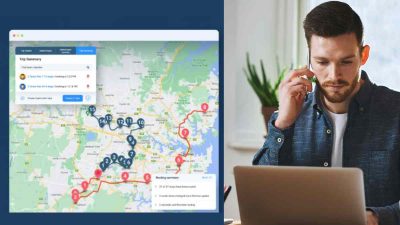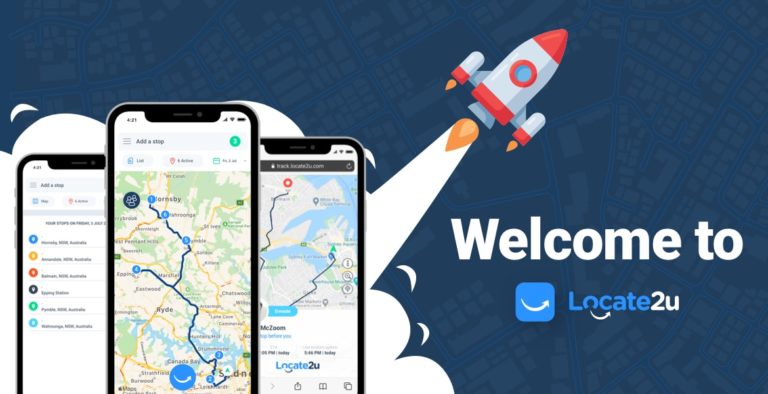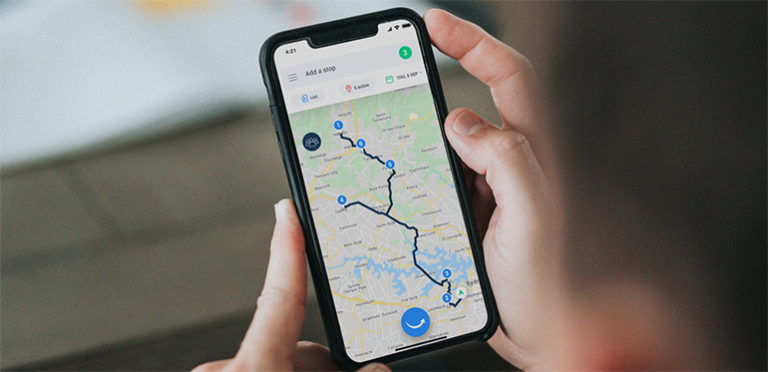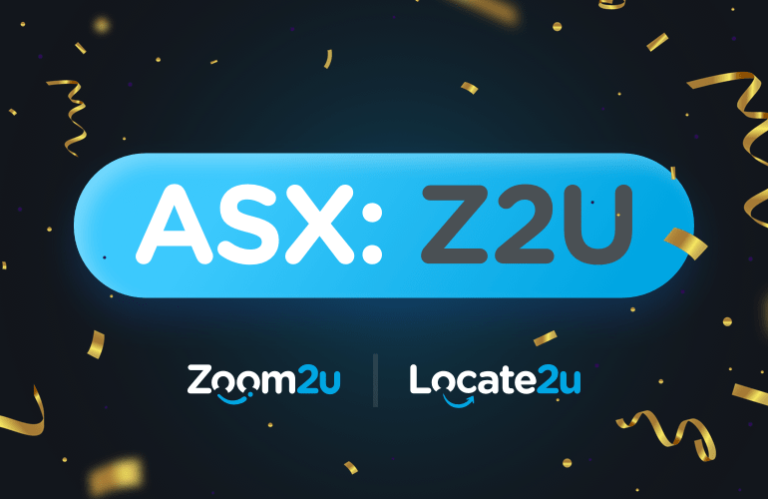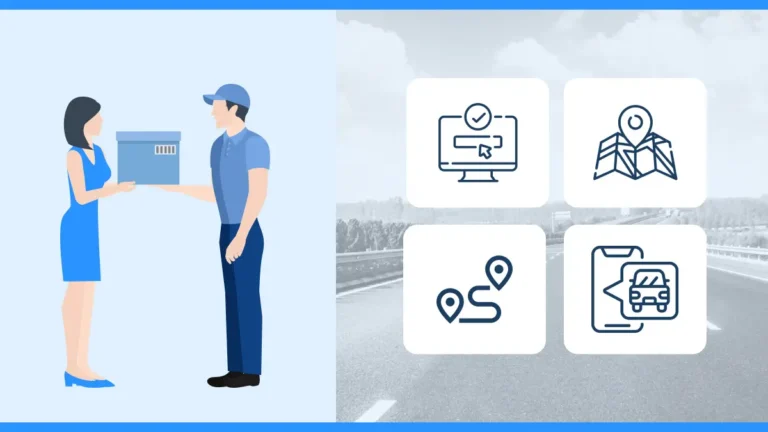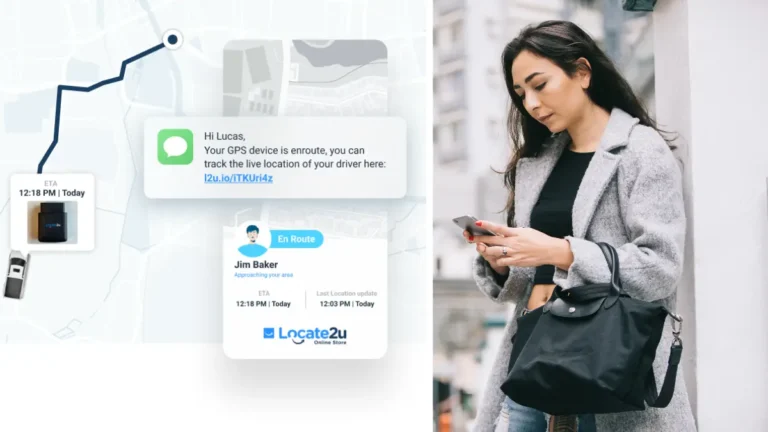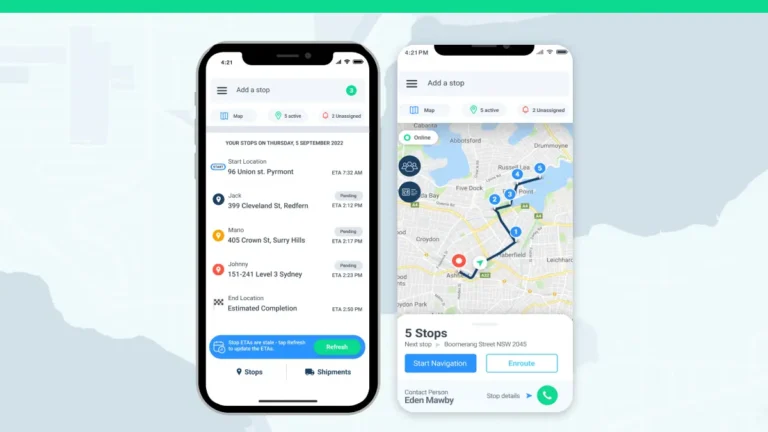Route planning is one of the pillars of the delivery operation.
In the intricate dance of logistics, one misstep can lead to a chain reaction of disappointment, reminding us just how fragile trust can be.
Whether it’s managing daily shipments, ensuring timely customer deliveries, or optimizing driver schedules, planning can significantly impact your bottom line.
This article breaks down how route optimization fits into the planning of routes to ensure your parcels get to your customers on time.
What is Route Planning?
Planning a route is the process of finding the most efficient path for your delivery drivers. It may sound simplistic when you only make two or three deliveries per day.
But wait until your business grows, and you can’t keep track of the different drivers and their 50-plus deliveries per day.
Panning takes all of this into account. It uses route optimization software to consider traffic, delivery windows, and vehicle capacity.
Done right, it helps businesses minimize delivery costs, improve driver productivity, and keep customers happy.
Route planner vs route optimization
You might wonder if a route planner and route optimization are the same thing. No, it’s not.
Planning a route is the process of creating a plan for visiting all those different locations that your company has been assigned to for deliveries.
Route optimization is the software that finds the most efficient and cost-effective way to those stops in the shortest possible time.
According to Upper, over 55% of retailers acknowledge that manual planning is inefficient in delivery operations.
Key elements of planning a route
There are three elements that define the planning process: Predefined routes, real-time conditions, and delivery constraints.
That’s why you need to plan routes to avoid getting hamstrung by these roadblocks that can derail your delivery speed
Predefined routes
These predefined routes are used for frequent deliveries. The system has predetermined them as the best and quickest route for each time of day.
Real-time conditions
Route optimization helps businesses to consider factors like road closures, traffic conditions, and weather in real-time. These factors change every day and can delay the entire day’s delivery if the real-time conditions are not taken into consideration.
Delivery constraints
It’s complicated to manage delivery windows, customer preferences, and special handling needs without technology. This is what route optimization simplifies.

How route optimization enhances planning
I think you know now that planning a route won’t be possible without route optimization.
Efficient route optimization can reduce overall fuel usage, decrease maintenance costs, and minimize vehicle idle times, all of which lead to lower operational costs.
This is according to DispatchTrack, which found that route optimization can reduce driver and fuel costs often by more than 10%.
Route optimization is the next step in planning a route.
It uses technology to find the best possible routes based on all available data. Without the data collected by the software, a route planner would be inefficient.
How does route optimization work?
A route optimization engine assesses thousands of possible routes to determine the quickest route.
It also makes it easier for the driver to determine which parcel must be loaded into the vehicle first.
And because you know the route the driver is following, you can tell the customer exactly when the parcel will arrive at their doorstep.
With a more accurate time window, the highly accurate delivery time will impress customers.
Benefits of route optimization
Better, faster, and more accurate. Those are some of the main benefits of route optimization.
Faster deliveries: Customers want speedy deliveries. Gone are the days when they were fine to wait for a few days for the postie to deliver the parcel.
Now speed is everything. By optimizing routes, customers can order early in the morning and still have it in their hands in just a few hours.
This is the kind of service you want to standardize for your customers when you are in the e-commerce business.
Same-day or next-day deliveries are expected because this is what Amazon, the retail giant, has been able to give them.
Improved delivery accuracy: Route optimization also offers this benefit. Drivers follow the best route, not the shortest one.
Using the right software also helps to find the right addresses quickly and not miss any deliveries, ultimately costing the company money.
Improve communication: Route optimization helps establish a clear line of communication between the driver and the customer.
With real-time tracking features, customers receive a message notifying them where the driver is on the route.

When a customer doesn’t need to guess or call the company to inquire every hour, the company’s delivery process happens much faster. This is especially true when a driver has multiple locations to juggle.
Service is more reliable: When the routes are optimized and the best route is used, customers start noticing that they can rely on the service. Even if there are multiple stops along the route, the customer knows it will arrive within the given time window.
Traditional route planner vs. route optimization
Businesses often find themselves at a crossroads between traditional planning of the best routes and full-scale route optimization.
Locate2u CEO Steve Orenstein says using traditional planning methods will get you stuck in a system that is not using the most efficient routes, and the workload is not evenly distributed.
“I always take all of their data, and I actually run it through a route optimization engine. I want to work out: Is this the best route?”
Let’s see what the difference is between a traditional route planner and route optimization.
Traditional planning of routes
Most businesses have predefined routes. Those routes are defined for each driver and have a certain number of bookings. The routes have been created for years and have never been reviewed again.
Chances are that the workload is not distributed evenly on the number of drivers available on specific days.
Here’s the kicker: It’s probably going to continue to operate like this for the next decade. Drivers have designated zones where they deliver parcels daily.
There are pros and cons to using a traditional route planner.
Pros:
- Consistency for drivers. They don’t have to change routes every single day. They know their path, and they get to the addresses.
- Easier to manage for smaller companies or those with predictable delivery patterns.
Cons:
- There is less flexibility with a route planner. You can’t really scale operations down or up.
- It’s also difficult to adapt to unexpected changes in delivery volume. This is especially concerning during peak season when volumes change rapidly.
- You also don’t use your driver or vehicle resources efficiently.

Route optimization
Route optimization is driven by technology that analyzes delivery points or delivery stops, considering factors like weather and traffic.
With route optimization, businesses can rethink and adapt traditional routes. But just like with a traditional route planner, there are advantages and disadvantages.
Pros:
- Efficiency is maximized. It saves time, which allows for more orders to be completed per day compared to your competitor.
- Businesses can easily grow with route optimization software. There is no limit to its capacity. It can easily take in more delivery drivers and deliveries on the digital system.
- It adapts quickly to changes in delivery volume.
Cons:
- Drivers must wait a few minutes for the algorithm to process data, depending on the delivery volume.
- Drivers may have to learn new routes. In some instances, older drivers battle to adapt to technology if it’s too complicated. However, there is software that has been made user-friendly to allow older drivers to learn quickly.
How to choose a route planner method
Now that you know the difference and how route optimization is needed to reach your destination faster during the delivery journey, let’s explore the process of choosing the right planning method.
Ask yourself these three questions.
How big is your business?
How many deliveries do you handle per day?
Can route optimization integrate with your existing system?
According to DropOff, businesses with more complex logistics benefit, especially from route optimization software. The size of your business does matter. Small businesses starting off might still get away with manual planning of routes.
The larger the volume of the business, the more important it is to invest in advanced software to optimize routes automatically. This also has its benefits with fuel costs being reduced and real-time updates that can be sent to customers.
You want to save costs, given that the last mile makes up 53% of the total shipping costs, including fuel expenses and labor costs.
Key considerations for optimizing delivery routes
Creating efficient delivery routes is crucial for businesses focused on logistics and transportation. Imagine you have a van full of deliveries to make for the day, and you are stuck in traffic due to a multi-vehicle collision.
It could take hours before the scene is cleared. But if you had used route optimization software, you could have avoided this entire scenario with real-time updates to help you plan better.
Traffic flow and congestion during delivery
Understanding traffic patterns and congestion is essential. Many using traditional route planners are impacted by traffic, as it’s something that changes as often as the weather.
These factors can directly affect delivery times and overall efficiency. To prevent delays:
- Use mapping software and GPS tracking to analyze current and historical traffic data.
- Identify peak traffic hours, construction zones, and other bottlenecks.
- Adjust delivery schedules to avoid high-traffic periods and use alternative routes when necessary.

Accurate distance and time estimates during delivery
Precise calculations of distance and travel time are important for route optimization. If you don’t plan properly, you can easily disappoint a customer and risk losing him or her.
To ensure accurate planning, use the following:
- Utilize reliable maps and tools to estimate the distance between stops.
- Take into account average travel speeds based on historical data.
- Use GPS systems to adjust routes in real time, accounting for unexpected delays.
Delivery frequency
Optimizing delivery routes also means considering how often each location requires a delivery. To make the most of your delivery schedule, use these tips:
- Group deliveries by geographic proximity help to find the shortest time.
- Prioritize high-frequency stops. This ensures that they are served consistently.
- Calculate routes that cover clustered areas in a single trip. This will reduce the number of back-and-forth journeys, saving you time and fuel money.
Driver availability and scheduling
Your driver schedules are just as important as picking the right routes. Overburdened drivers or unrealistic schedules can lead to burnout and delayed deliveries. That’s why route optimization helps to spread the load evenly.
Consider the following when planning routes:
- Align routes with drivers’ availability. This ensures that there are no unrealistic expectations. Drivers who work faster can be assigned more deliveries throughout the day.
- Avoid assigning overly complex routes that increase the risk of driver fatigue. You don’t want to get your drivers too confused. Keep it simple and let them still feel in control.
- Ensure drivers have sufficient breaks and that routes allow ample time for completion. You don’t want drivers to feel rushed that they start disobeying basic traffic laws and end up in accidents.
Delivery deadlines and priorities
Customer expectations are higher than ever. According to Statista, nearly two-thirds of global online shoppers anticipated receiving their items within 24 hours, with four in ten expecting delivery within two hours.
Many customers are expecting same-day or time-specific deliveries.
So when you are planning routes, remember this:
- Prioritize orders with strict time windows or urgent deliveries. These customers have a higher expectation of their delivery. If you disappoint them, they might go shop somewhere else. Other customers are willing to wait a bit longer.
- Sequence deliveries to align with customers’ preferred delivery times. If a customer has indicated that they can only be home during a certain delivery window, you must time it to be delivered then. But chances are, there might be a few in the area. Sequence these deliveries.
- There will always be last-minute changes. This is the nature of the industry. Try to integrate flexibility into routes for these high-priority changes.
Steps to enhance route optimization
Route optimization is a vital part of finding the best calculated route. Automating the planning phase of the route will save you vital time needed elsewhere in the business.
Using technology, streaming communication, and monitoring feedback will set you apart from your competitors.

Utilize technology for better deliveries
GPS tracking and route optimization software can help with providing accurate real-time updates and suggestions. It also helps to minimize human error.
Think of that one employee who has to sit in front of a computer with an Excel spreadsheet, planning the routes for hours a day. Mistakes happen all the time.
But with technology, the best decisions are made by analyzing the data already captured.
AI-powered tools can also easily predict traffic patterns and recommend the best delivery windows.
Streamline communication during deliveries
Giving your customers a live tracking link makes the delivery process transparent. Customers can follow a driver’s progress in real time.
Communication is essential to keeping customer satisfaction high, especially when the delivery includes multiple locations or stops.
A driver might be stuck at one or two locations. But with open communication and a live tracking link, the customer doesn’t have to guess what’s happening.
Monitor and adapt based on feedback
Feedback helps your business improve and grow. It’s like getting a report card for your deliveries. Just like customers can give drivers feedback, drivers can give managers feedback on inefficient routes.
Customers can also contribute by informing the business about any delayed deliveries or missed delivery windows.
About the author
Mia is a multi-award-winning journalist. She has more than 14 years of experience in mainstream media. She's covered many historic moments that happened in Africa and internationally. She has a strong focus on human interest stories, to bring her readers and viewers closer to the topics at hand.


